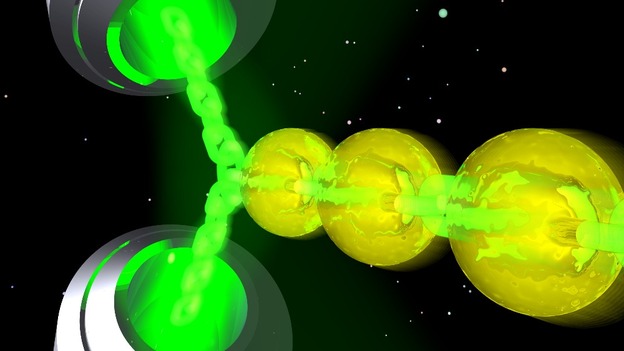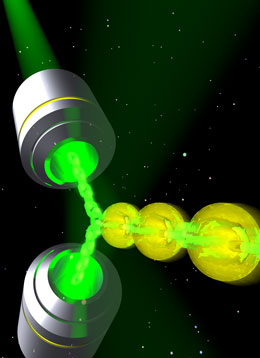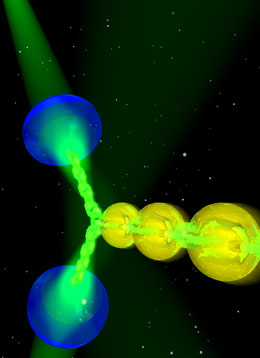Scientists Create Real-Life 'Tractor Beam.' Star Trek Becomes Reality

A team of scientists from Scotland and the Czech Republic has created a real-life “tractor” beam, as featured in the Star Trek movies, which for the first time allows a beam of light to attract objects.
This has been achieved by researchers from the University of St Andrews and the Institute of Scientific Instruments (ISI) in the Czech Republic through successfully reversing the radiation pressure of light, albeit on a microscopic level. Normally when matter and light interact the solid object is pushed by the light and carried away in the stream of photons. This was first discovered by Johanes Kepler, when observing that tails of comets point away from the sun.


"BEAM ME UP, SCOTTY"
However, researchers have recently realised there is a finite space of parameters within the optical fields where this force can actually be reversed. This miniature tractor beam is the first experimental realisation of this concept, bringing exciting applications in many areas.
With the ability to target and attract individual cells, leading (potentially) to more efficient medical testing, such as blood sample examination.
The team made some interesting observations about the tractor beam in bio medical situations. Usually, a process called optical fractonation is used to sort individual cells: basically sifting particulate matter with a sieve made of light. But the occurrence of beam is extremely specific to the properties of the object, meaning individual cells can be sorted and categorised.
What's more, they also discovered that in certain conditions, the objects held by the force-field of the tractor beam re-arranged themselves to form a structure which made the beam even stronger. While it is fascinating, I'm rather glad it is to a microscopic level, removing the risk of re-arranging us humans...for now.
“The whole team have spent a number of years investigating various configurations of particles delivery by light. I am proud our results were recognised in this very competitive environment and I am looking forward to new experiments and applications. It is a very exciting time.” Professor Zemanek of the ISI commented.
Source: University of St Andrews
Jason England